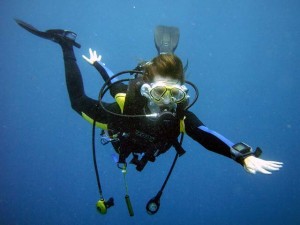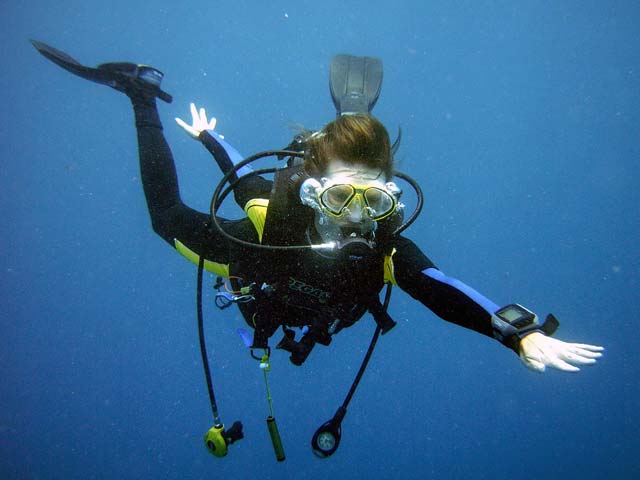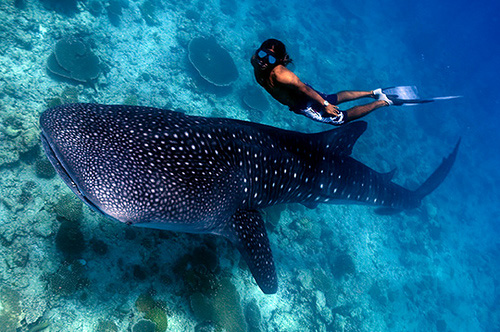Visibility
 Temperature in Maldivian waters is in the range of 200 – 300C.
Temperature in Maldivian waters is in the range of 200 – 300C.
The best underwater visibility occurs from March to April. That is the end of northwest monsoon. During this time 40 meters can be easily seen. Sometime it is possible to see 70 meters down the coral edge. From April onwards, the visibility is reduced to about 20 meters when planktons being to bloom. However during this time, the plankton rich waters attack manta rays and whale shark. Perhaps, you will want to do some diving at this time.
Visibility is also affected by the rise and fall of the tide. Incoming tides brings clear waters, while the falling tide is filled with plankton and sediments.
There is also the effect of sunlight on water. Because of refraction of light through water, objects may look larger than they really are. Colours may also change. As you descend deeper, more light is filtered out by water and absorbs different colours at different rates.
From May through November, the seas will be calm and sky will be blue. During this period, the winds will be north westerly and the currents outside the atolls west to east at an average of 24 meters a minute.
During June and sometime October and in early November, the seas will be rough. Strong winds will blow from northeast and currents may run to west at 30 meters a minute.
Good times for a dive
January to April is usually considered a good time for a scuba dive. There is fine weather and good visibility. May and June through September can have unstable weather and cloudy days are common. October and November have calmer weather but visibility may be reduced. December may not be a good period as it may have rough windy weather and rain.
Diving at night
When the sun sets, the corals open up and extend their tubular sponges to search for food and moray eels and other nocturnal predators. At night the visibility will be reduced, but the atmosphere is unmatched. You will very often come across sharks which are hunting by moon light.
Diving equipment
- Fins
- Masks
- Snorkel
- Compressed air cylinder and valve
- Buoyancy control device with low pressure
- inflator
- Backpack
- Regulator
- Alternate air source
- Submersible
- Pressure gauge
- Weight belt
- Exposure protectors
Beware while diving
Sharks can be seen while you are under the sea. The most common types you will see are the nurse, whitwtip, reef blacktip, grey reef and silvertip shark. However you do not have to worry as these are not dangerous unless you provoke them. Nevertheless if you see a shark hunched back, nose up or pectoral fins down, you should leave the place slowly and quietly.
You will also see barracudas and moray eels which have sharp teeth are not usually dangerous. But you must not disturb them.
You must take care of yourself while walking on the sea floor, because stone fish will be there which is extremely good at camouflaging. Beware of the scorpion fish which camouflages itself and its spines are poisonous.
Lion fish also has poisonous spines. They are brightly colored and float in the middle of the waters.
Whilst you dive, it is important to consider the direction and strength of currents. These are particularly important at the seas between atolls and even at shoals inside atolls. Currents in the seas of Maldives are caused by monsoons, typically east to west during the northeast monsoon from December to April and west to east during the southwest monsoon from May to November. During the intermediary time between the two monsoons, the wind direction and tides often offset the influence of the current of the seas. The location of the islands and shoals can cause irregularities in the flow of current streams inside the atolls.


